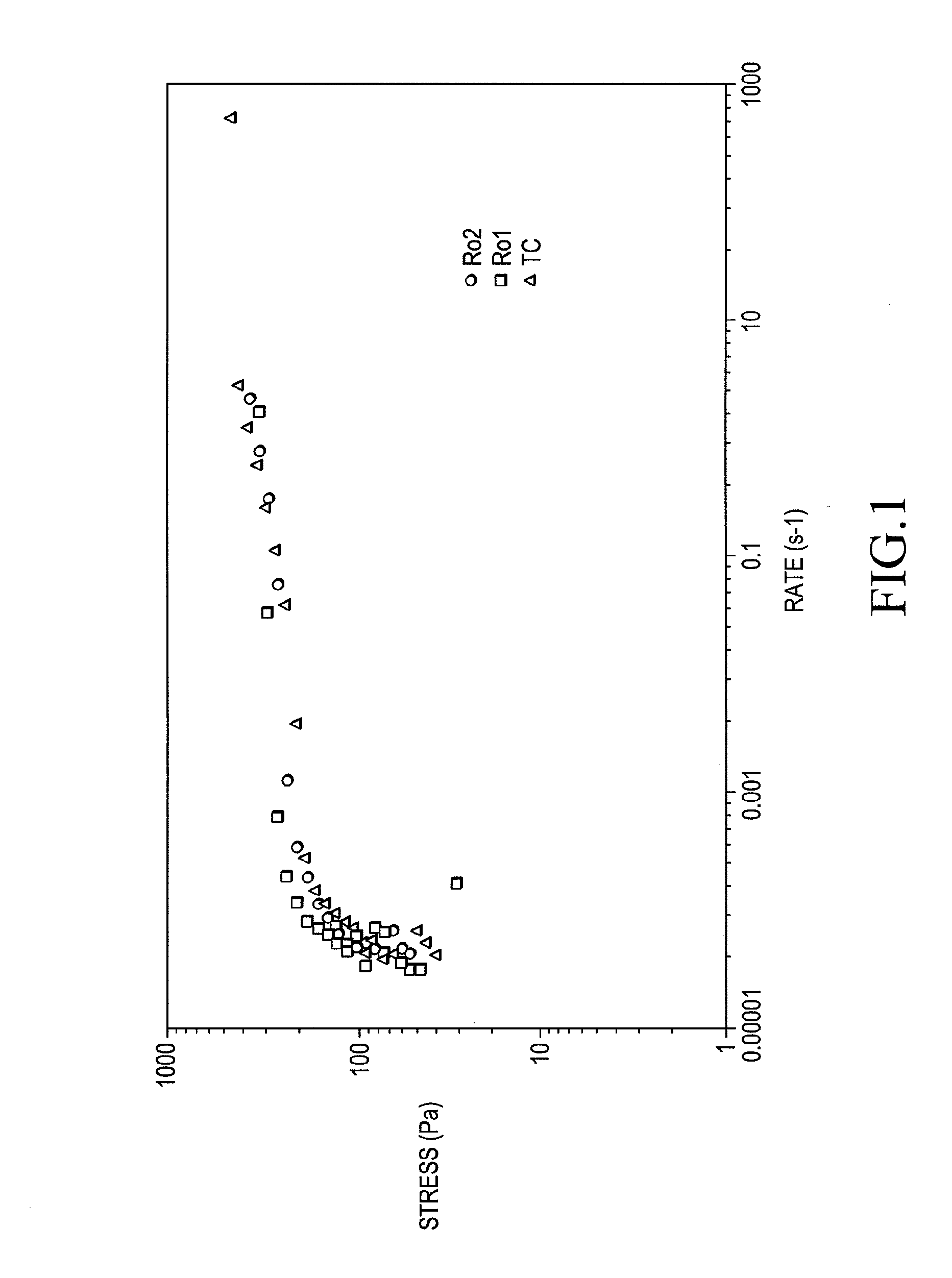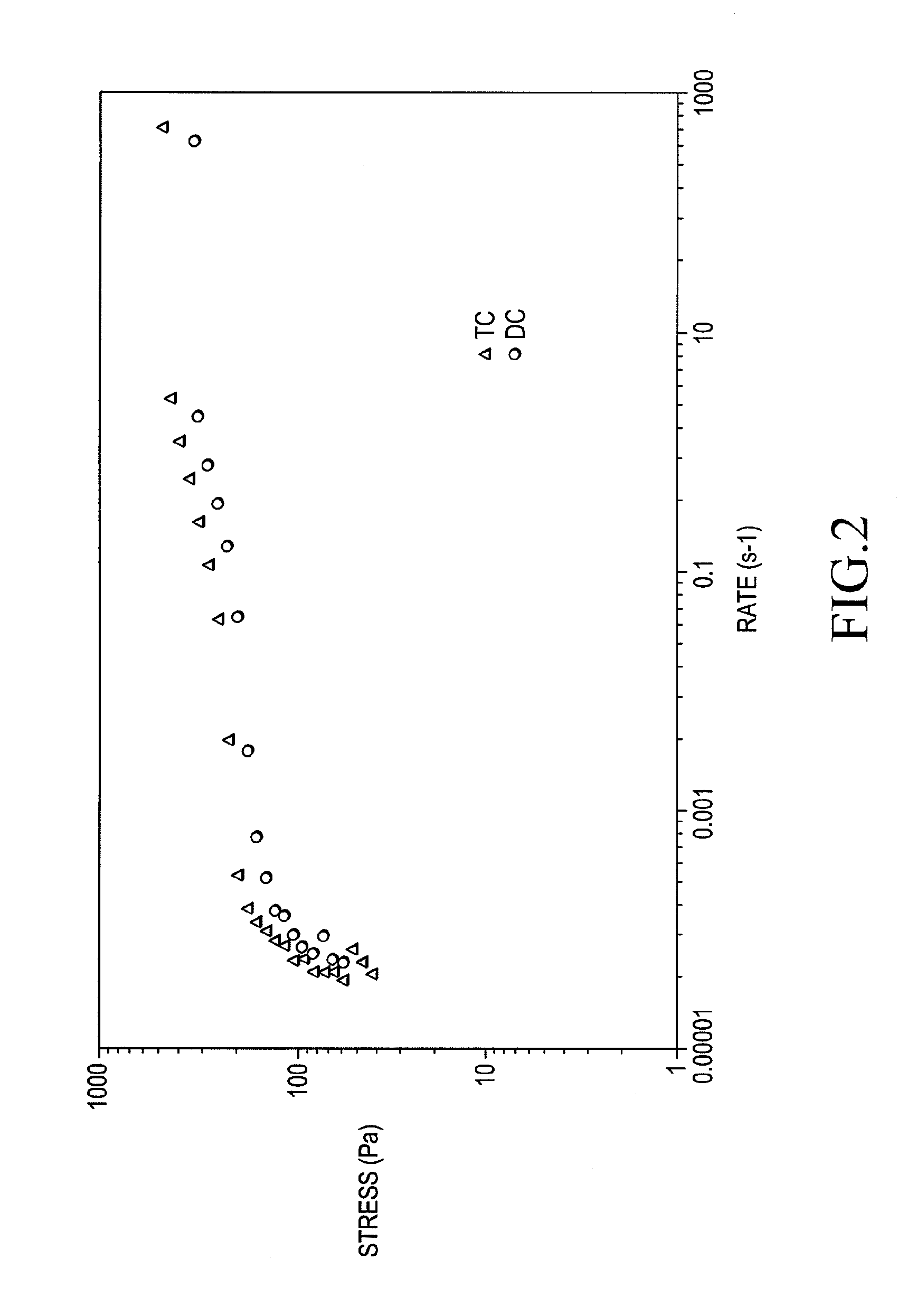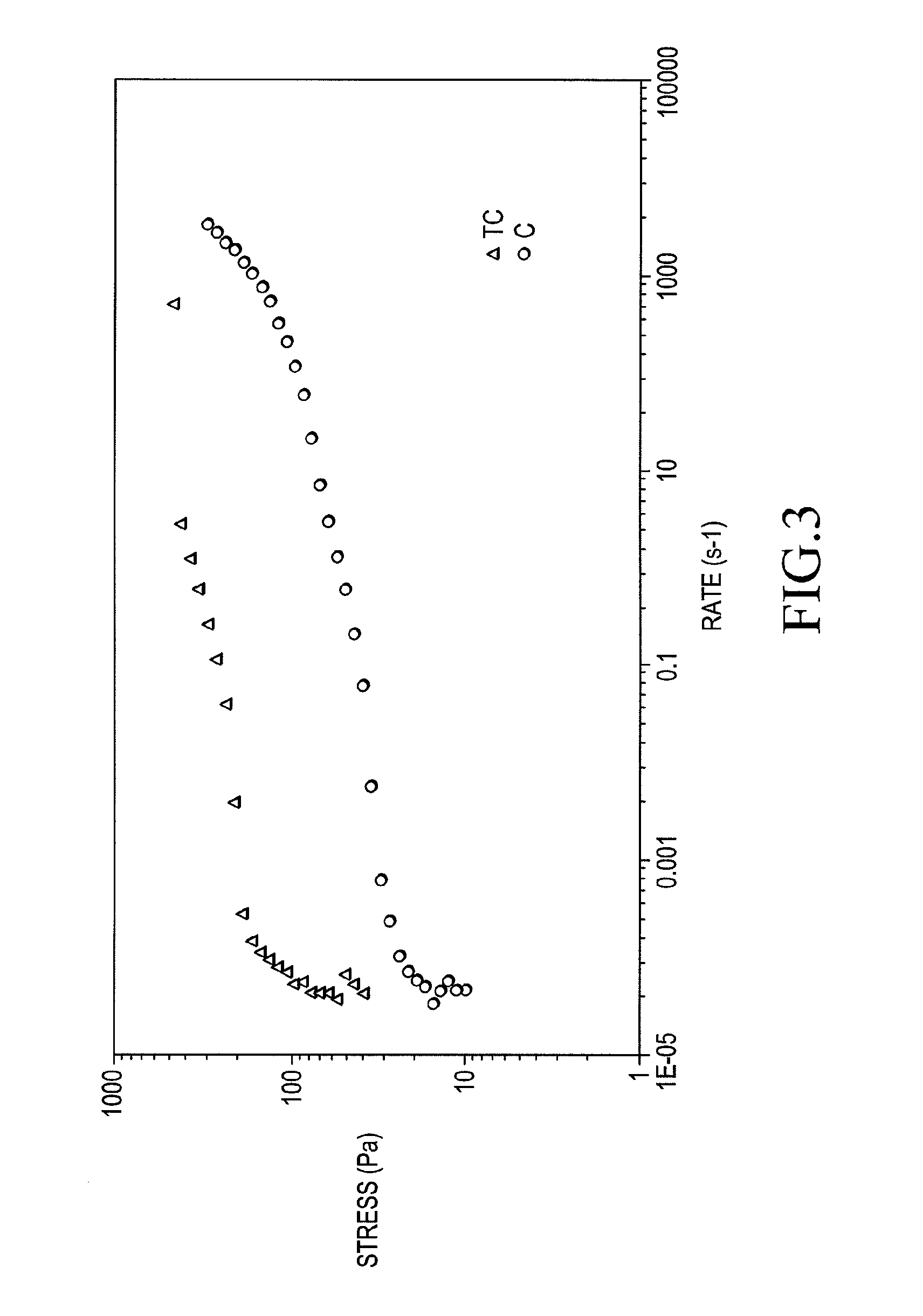Tomato Products
a technology of tomato products and products, applied in the field of tomato products, can solve the problems of inability to filter tomato products, inability to operate at room temperature, and inability to dilution of concentrated products, so as to improve the saucing power, improve the organoleptic properties, and avoid caramelization. the effect of tas
- Summary
- Abstract
- Description
- Claims
- Application Information
AI Technical Summary
Benefits of technology
Problems solved by technology
Method used
Image
Examples
example 1
Preparation of a Tomato Product (Ro2 Code)
[0097]The processing is carried out under sterile conditions.
[0098]10 Kg of tomato juice (free from seeds and peels), previously hot break to inactivate enzymes, are portion-wise transferred in a 10 litre separator equipped with stirrer. The separator is constituted by food grade stainless steel wherein the walls are constituted by woven wire cloth having a hole diameter of 0.5 mm, the bottom wall of the separator does not have slots or holes. The stirring in the separator is such that the solid is conveyed towards the central zone of the separator. The distance between the separator walls and the stirrer blades is of 0.5 cm. The stirring (3 rpm) is started and it is operated at a temperature in the range 5° C.-10° C.
[0099]After 3 hours stirring speed is reduced to 2 rpm. It is noticed that the mass in the separator has become compact and homogeneous. After 7 hours from the process beginning, no serum is any longer separated from the mass in...
example 2
Preparation of a Tomato Product (Ro1) by Adding to the Product Ro2 Lyophilized Tomato Serum
[0112]980 g of the product Ro2, to which 20 g of lyophilized tomato serum are then added, are transferred into a vessel equipped with stirrer, in a sterile environment. It is stirred at 8 rpm at a temperature in the range 5° C.-10° C., until a homogeneous mass is obtained (product Ro1).
[0113]It is found that Ro1 has a dry residue of 11.8% by weight, water 88.2%, the water soluble solids are 58.5% and the water insoluble solids are 41.5% of the dry residue.
[0114]The rheological properties (shear stress / speed gradient (s−1) trend) of the product Ro1 have been measured and compared with the same commercial products used for obtaining Ro2.
[0115]The Ro1 trend is reported in FIG. 1 and the data with which the rheogram has been plotted are reported in Table 2. It can be repeated the same conclusions above mentioned for Ro2.
example 3
Preparation of Compositions of the Invention Tomato Products with Vegetable Oil
[0116]A composition of tomato product Ro1 and olive oil was prepared. In a vessel, under stirring at 200 rpm, olive oil was slowly added, at small portions, to the product Ro1, leaving the mass under stirring for 5 minutes. The englobed oil amount is 15% by weight. The product was recovered and let stand one month at +4° C., in a closed vessel, without showing substantial oil separation.
PUM
 Login to View More
Login to View More Abstract
Description
Claims
Application Information
 Login to View More
Login to View More - R&D
- Intellectual Property
- Life Sciences
- Materials
- Tech Scout
- Unparalleled Data Quality
- Higher Quality Content
- 60% Fewer Hallucinations
Browse by: Latest US Patents, China's latest patents, Technical Efficacy Thesaurus, Application Domain, Technology Topic, Popular Technical Reports.
© 2025 PatSnap. All rights reserved.Legal|Privacy policy|Modern Slavery Act Transparency Statement|Sitemap|About US| Contact US: help@patsnap.com



